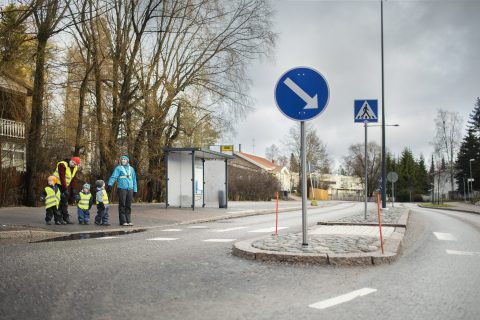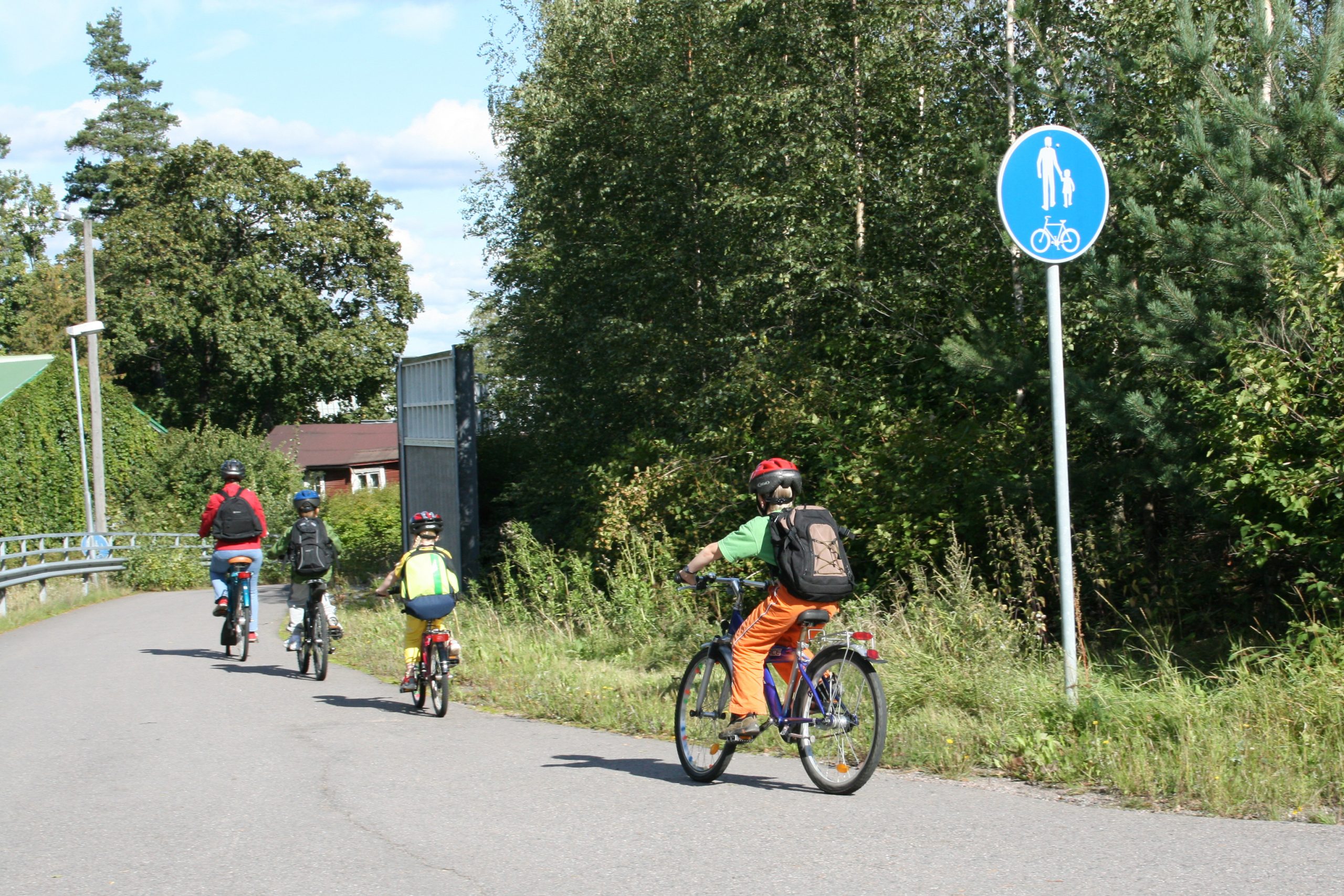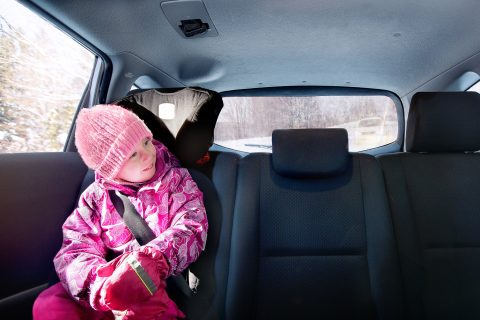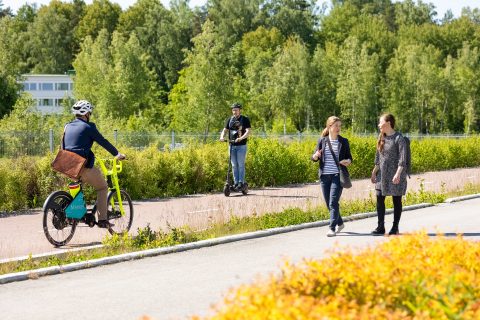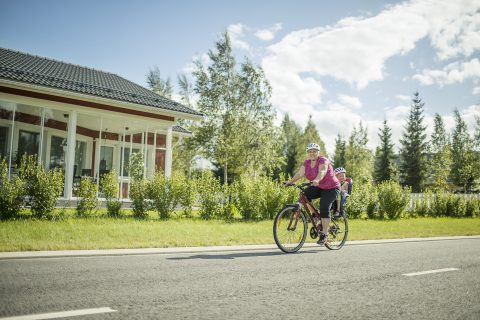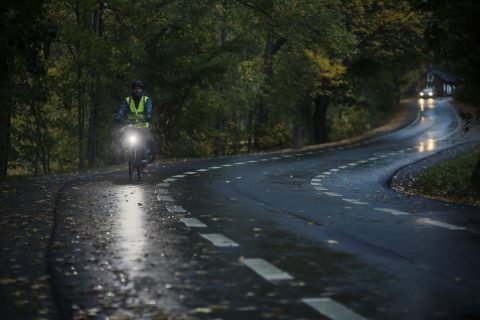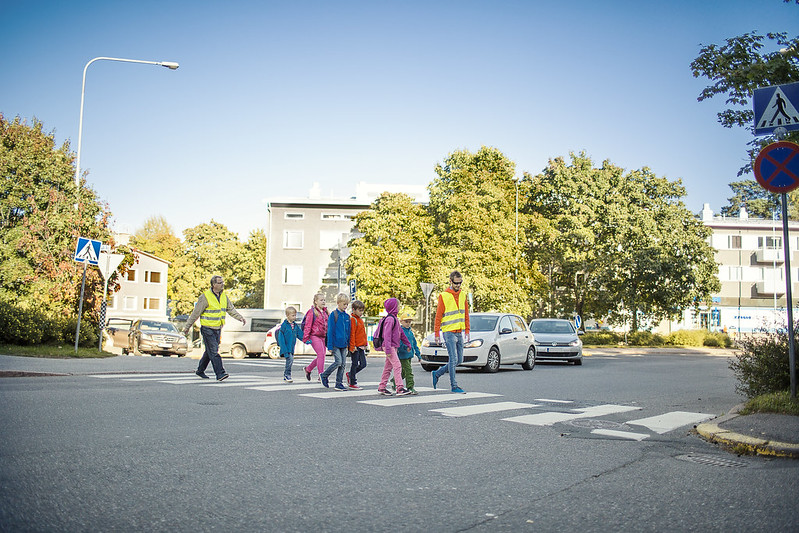
Walking school bus
In a walking school bus, children walk to school with one or more adults according to agreed schedules and stops. When walking to school together with an adult, the child also learns how to manoeuvre in traffic safely.
At its simplest a walking school bus can be just two families taking turns walking their children to school. A walking school bus can also create a new sense of community in the neighbourhood.
Taking children to school by car causes congestion in the vicinity of schools and increases traffic risks. The walking school bus reduces this traffic. In addition, a child sitting in a car does not improve their own traffic skills in the same way as a child walking in traffic. A walking bus has the added benefits of exercise as well.
Benefits for all
Children
- learn how to move around safely and in an environmentally friendly way with adult support
- benefit from daily exercise and are active when arriving at school
- get to know children in the neighbourhood and enjoy themselves.
Adults
- learn to examine school trips from the perspective of child safety
- take responsibility for the safety and upbringing of children
- see what children are able to do and where they need support
- meet other adults and children
- know that children go to school with the aid of adults
- can take turns accompanying children to school
- benefit from exercise themselves.
School
- nearby school runs are reduced and safety is improved
- cooperation among homes increases
- pupils come to lessons in good time and feel active.
How to launch a walking school bus
- Gather a group of parents interested in getting involved.
- Agree on and test walk the route.
- Create a schedule. The walking bus need not be used every day.
- List the rules of walking together that comply with the traffic regulations and are as safe as possible.
- Please note that the size of the walking bus must not be too large, and the suitable size for first class pupils is four children per adult.
- Remember that the ‘driver’ is a role model giving an example to the children. The driver explains what should be observed and taken into account in different traffic situations. The goal is that children learn to move around independently, and the adults eventually become redundant.
Basic rules for walking buses
- An adult is the driver of the walking bus.
- Everyone observes traffic and looks around.
- Everyone walks calmly together in a group.
- The group stops before crossing the road.
- The road is crossed together only when it is safe.
- A reflector or reflector vest is worn in the dark and dusk.
- No rushing and no pushing.
Special considerations for ‘cycling school buses’
- The traffic environment and children’s capabilities determine the age for starting to cycle.
- Everyone must wear a cycling helmet.
- The distance between cyclists must be sufficient.
- If there are many cyclists, two adults are needed.
